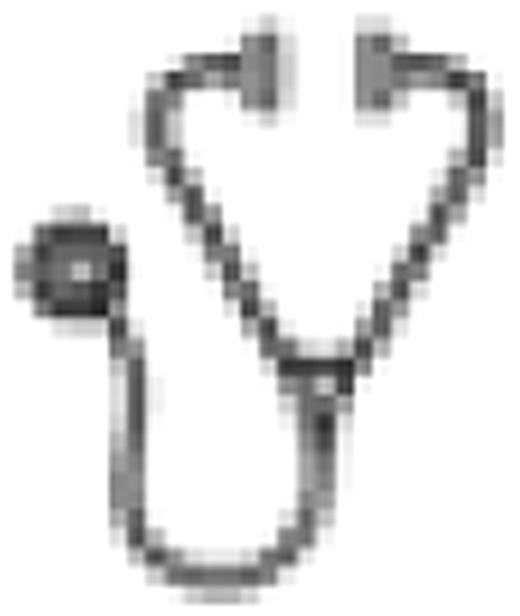Abstract
Abstract 733
Previous studies have noted that advanced age may not predict survival in diffuse large B-cell lymphoma (DLBCL) when adjusted for health-related comorbidities. Very elderly patients over age 75, however, have been underrepresented in prior studies, so the interaction of prognostic factors in these patients treated with modern chemotherapy has not been assessed. According to SEER the median age at diagnosis of non-Hodgkin lymphoma in 2003–2007 was 67 years. Incidence is rising, with prevalence of diagnosis in men over 75 having increased almost threefold from the late 1970s. We sought to determine the impact of known prognostic factors and therapy choice in the very elderly.
We used an IRB-approved clinicopathologic database to identify all patients 75 years of age and older with a diagnosis of DLBCL. Patients were excluded if they had primary lymphoma of the central nervous system. Since 1996, 154 patients over the age of 75 were diagnosed with DLBCL at MGH out of a total DLBCL population of 2097 patients in that period. Detailed chemotherapy information was available on 116 and are included in our analysis.
The following information was collected: clinicopathologic diagnosis, diagnosis date, site of disease, age at diagnosis, vital status, and last known follow up. State and national sources were used to verify patient deaths. Information regarding prognostic status, number of extranodal disease sites, albumin, hemoglobin, and lactate dehydrogenase (LDH) was available for some patients. Charlson Comorbidity Index (CCI) was computed using ICD-9 codes. Age was assessed as a separate factor and not included in CCI computation. Severe toxicity to patients was determined by inpatient discharge summaries during their chemotherapy regimen. Likelihood that a toxic event occurred was estimated from the presence of a discharge summary within six months after date of diagnosis. Overall survival was calculated from date of initial diagnosis until date of last follow-up or date of death.
The series included 81 patients ages 75–79 and 73 patients 80 years and older. Among patients age 75–79, 43 were men and 38 were women, and among 80 and older, 25 were men and 48 were women. Advanced stage and limited stage were equivalent in frequency at 71 and 67 respectively. ECOG performance status (ECOG PS) was available in 77 patients of whom 41 were >=2 and 36 were <2. Toxicity requiring hospitalization was present in 42 of 136 patients (unknown for 18 patients). Among these toxicities, cardiac, lung, and infectious complications were the most likely. Toxicities were; 23.8% had an infection related hospital admission within six months of diagnosis, 16.7% had a cardiac admission and 14.3% a pulmonary admission. Most patients had comorbidities, with the median Charlson Comorbidity Index (CCI) being 5. Treatment regimen data was available for 116 patients. Anthracyclines were used in 53.2% of 154 patients and Rituximab was used in 39% of 154 patients.
Prior to 1996 treatment data for many patients was missing.
Median survival time was 10.6 months. In the subgroup of patient treated with both anthracycline and rituximab the median OS was only 13.6 months. US population data from 2007 (the conclusion of this study) estimates life expectancy for 75 at 11.7 years and for 80 and older at 8.8 years.
Univariate factors analyzed included sex, Ann Arbor Stage, ECOG PS, Charlson comorbidity index, and age over 80. Of these, only PS <2 versus ≥2 (p=0.0533, Log-Rank test), and age over 80 (p=0.0010, Log-Rank test) were significant, while limited/advanced stage, CCI were not.
Chemotherapy was also evaluated in a univariate analysis. Use of anthracycline (present or absent in therapy) and rituximab use (present or absent) were both determined to confer a significant benefit to patient survival (respectively p=0.0055 and p=0.0106, Log-Rank test).
Despite the use of intensive modern chemotherapy regimens the outcome of DLBCL in very elderly patients is poor with a median overall survival of approximately 1 year. Univariate predictors of outcome include age and performance status as well as the use of anthracyclines and rituximab. Over 30% of these patients will be admitted for treatment related toxicities. Novel therapeutic strategies are needed in this rapidly expanding demographic group.
Hochberg:Giogen Idec: Speakers Bureau; Genentech BioOncology: Membership on an entity's Board of Directors or advisory committees, Speakers Bureau; Enzon Pharmaceuticals: Membership on an entity's Board of Directors or advisory committees, Speakers Bureau; Amgen: Speakers Bureau; WordCare: Membership on an entity's Board of Directors or advisory committees.

This icon denotes an abstract that is clinically relevant.
Author notes
Asterisk with author names denotes non-ASH members.

This feature is available to Subscribers Only
Sign In or Create an Account Close Modal